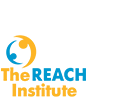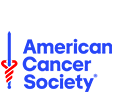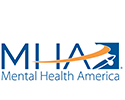What if You Had Fatty Liver Disease (MASH) and Didn’t Know It?
An estimated 100 million Americans have a fatty liver, and most don’t know it. Twenty million of them will develop liver fibrosis disease or Metabolic Dysfunction-Associated Steatotic Liver Disease (MASLD) and 5 million will progress to liver cirrhosis or Metabolic Dysfunction-Associated Steatohepatitis (MASH).
Wayne Eskridge didn’t even know what fatty liver was when his stage 4 disease was unexpectedly discovered during gallbladder surgery. He was so incensed that his doctors didn’t alert him to his growing problem any earlier that in 2017, he founded the Fatty Liver Foundation (FLF) to help others facing the same fate.
“Unfortunately, when MASH is in its early stages, there are very few or very subtle symptoms, making it difficult to diagnose or ascribe the problems to the liver,” Eskridge said. “As a result, historically people have not been screened for asymptomatic liver disease.”
What started as a personal, lifesaving mission became a nationwide initiative to identify asymptomatic, undiagnosed Americans with liver fibrosis or early cirrhosis caused by fatty liver disease, and to educate them on the lifestyle changes needed to halt or minimize disease progression.
“Our goal is to be very focused on the issue of fat in the liver, why it matters, what it causes and how to deal with it,” Eskridge said.
MASH: A Disease with No Symptoms
According to Eskridge, many people chalk up MASH symptoms to the process of aging. They may feel unwell, fatigued, or experience mild gastrointestinal upsets, but they don’t really feel “sick.” Even those with advanced liver damage (stage 4 with cirrhosis) may have no symptoms and completely normal liver test values. Moreover, MASH can take decades to develop; in the early part of disease development, it can take seven years to go from stage 1 to stage 2.
“Virtually everyone has some fat on their liver,” he said. “Fat in itself is not harmful, but excess fat is. It kills liver cells and eventually leads to MASH if not treated. It can be 20 to 25 years of slow-motion accumulating damage with no real symptoms along the way. Countless people arrive at end stage liver disease without ever having a symptom of any kind because the liver is so robust and fatty liver was previously not thought to be very dangerous.”
While MASH has no symptoms, there are several lifestyle factors that indicate whether someone may be at risk for having or developing the disease. One of the primary drivers is obesity, which affects over 42% of the adult population in the United States. Many with diabetes are also at risk of developing MASH.
“In terms of diet, too much sugar is as damaging to the liver as too much alcohol,” Eskridge said. “It is the primary thing that turns to fat in the liver. Eating excess white flour, white rice and potatoes is almost the same as eating sugar. Saturated fats found in milk and red meat can cause inflammation, which also is bad for the liver.”
Screening for MASH
As recently as 20 years ago, MASH could only be detected by an invasive, uncomfortable, and time-consuming liver biopsy, a procedure that most people want to avoid. Moreover, in the early stages of the disease, even a biopsy cannot confirm the presence of MASH with 100% confidence. Since liver damage can be patchy, it can depend on where the biopsy is taken and whether the sample size is adequate.
Today, doctors can check for signs of liver fibrosis with a simple blood test called Fibrosis-4 (FIB-4). FIB-4 blood results, in conjunction with a person’s age, indicate whether someone is at high risk for liver fibrosis (FIB-4 > 3.25) or low risk (FIB-4 < 1.3). When FIB-4 panels are conducted over time, doctors can see changes taking place in the blood chemistry, allowing them to plan interventions to slow the progression of the disease.
Those with mid-level FIB-4 scores may be referred to additional screening with a special type of ultrasound called liver elastography, which measures liver stiffness (hardness) and fatty changes in the liver.
“Non-invasive screening methods are effective, accurate, and getting better all the time,” Eskridge said. “Biopsy is no longer the gold standard and is no longer required for doctors to prescribe pharmacological treatments for MASH.”
FLF is working to promote screening through a series of Screening for Undiagnosed NAFLD/NASH (SUNN) studies. (Editor’s Note: NAFLD/NASH are previous disease nomenclatures that have been replaced by MAFLD/MASH.) SUNN-1 was implemented in Galveston County, Texas and successfully screened over 1,000 individuals using elastography machines at community locations. Approximately 15% of those screened were found to have NAFLD/NASH. FLF is in the planning and fundraising phase for SUNN-2, which will expand on the tactics and findings of SUNN-1 to screen more people while also connecting them to care and providing support.
New Treatment Options Available
Earlier this year, the first treatment for MASH was approved by the FDA. While not a cure, the drug is proven to reduce liver fibrosis among a percentage of people, when combined with diet and exercise.
“This is a huge win for the patient community,” Eskridge said. “Unfortunately, while the FDA said that a liver biopsy is not necessary for it to be prescribed, some medical insurers are not covering the cost of the drug without a biopsy, thus adding to the significant cost and logistical barriers to treatment for many patients.”
Eskridge praised the efforts of organizations like HealthWell, which helps to reduce financial barriers for MASH patients through its MASH Fund, which provides up to $8,000 in medication copayment or insurance premium assistance to eligible patients. The fund also offers financial assistance for doctor visits, disease-related laboratory testing, diagnostic testing, and transportation costs for treatment and monitoring.
“As a liver disease patient, I understand firsthand the nuances and obstacles of living with MASH,” he said. “Treatment and management of the disease requires multiple medications, diagnostic testing, and follow-up, leading to potentially overwhelming financial challenges. I applaud the HealthWell Foundation for recognizing this unique hardship for patients and for providing the financial resources to access and adhere to their treatment regimen.”



















